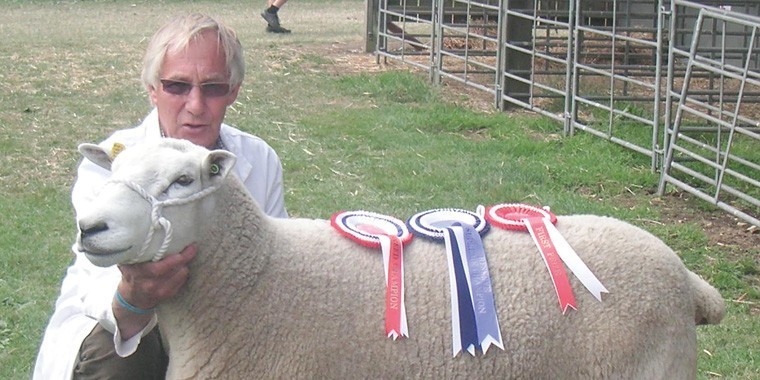I said last month that I would report on the sheep breeders’ round table event called “Get better or get gone.” Unfortunately, I had mistakenly put it on my calendar for the end of October. It is actually from 20 to 22 November, so I will report back later.
But we certainly do need to get better to keep producing sheep profitably. The current forecast is for continued pressure on lamb prices, with relatively high supplies forecast into the beginning of next year and the continued strength of sterling against the euro making exports (some 36% of our lambs) rather more difficult, particularly to our European neighbours.
At the end of 2008 the exchange rate was 1.02 euros to the pound: today it is 1.41, costing continental buyers some 40% more to purchase our lambs. So it is not surprising that exporters are struggling to make a margin on sales across the Channel. The only positive for prices is that there is normally a bit of an increase in demand for lamb over the winter. I suspect however that the seasonal uplift in demand could be significantly better if the drop in prices, that we as producers have suffered this year, was passed on to consumers. In August this year producers received just 42% of the retail price of lamb, compared with 52%+ in 2013.
We do, however have to accept that individual producers can do very little that will impact on the price of lamb nationally, but we can have an impact on the price that we receive for our lambs. The average price for standard lambs in Ashford Market last week (10 November) was 157p/kg, but within that the range was from 168p/kg to 133p/kg, a difference of 35p/kg, so buyers will, generally, pay more for quality. But quality is on buyer’s requirements, not our own perceptions of quality.
We may be producing what we all consider are good quality lambs, which, in the right markets, they may be, but a well fleshed, down cross lamb with a good level of finish may find a good market in a quality restaurant or small retail butcher. But, if it is too well finished for the volume trade, it will be heavily discounted.
The first rule of marketing is know to your market, and target production to that market. Improving the quality of the lambs we produce is about knowing your market. It is also about breeding, feeding and management and the latter is particularly important in selecting lambs for market and slaughter. The target classification for the volume lamb trade is E to U conformation and 2 to 3L fat, and has been for years. But even now only 58% of lamb carcasses fall within that specification; to put it another way more than 40% of the lambs we produce are not up to current volume market specifications. In the vegetable trade these would be outgrades that would probably not make it onto supermarket shelves, often just dumped; at least we can generally sell our outgrades, at a price, albeit not a good one.
But price is only a part of profitability: a significant other is about production costs. Even with low prices we can often maintain profits if we can cut costs of production. Again some of this is about breeding, having the right sheep for the job. Breeds and breeding do however tend to be long term; in the short term we can often reduce costs by improved management and feeding.
This year the latter is particularly pertinent. We have so far had an autumn that has been unusually warm, if a little wet. A weather pattern which is predicted to continue, but which has resulted in unusually abundant grass supplies. So why not make use of them to reduce the costs of winter feeding, particularly of ewes? Even if grass gets away from the sheep it will still generally have better feed value than hay, particularly some of the hay that has been made this year. Abundant supplies of winter grass, supplemented with some molasses blocks, have the capacity to maintain ewes in good condition through mid pregnancy and even into late pregnancy for some, with additional supplement of quality protein to stimulate milk production for more productive ewes. The important thing is to handle sheep regularly to monitor body condition and adjust feeding regimes accordingly.
As ruminants, sheep are capable of converting – via the rumen microorganisms – even poor quality forage into quality nutrients. But to do that we need to feed the rumen. Hence the molasses, which provides a regular source of readily available energy, not for the sheep but for the rumen microorganisms. Look after the inner animal and it will look after the sheep.
Have a good Christmas and new year.




